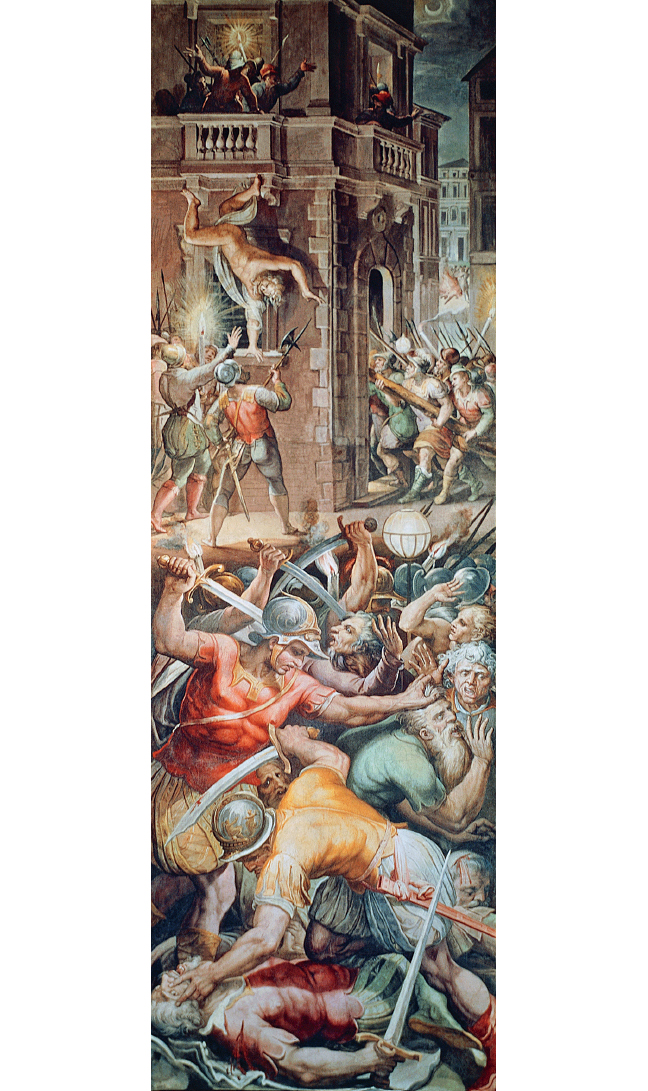Understanding World Societies:
Printed Page 447
> What were the causes and consequences of religious violence, including riots, wars, and witch-hunts?

Massacre of the Huguenots, 1573
The Italian artist Giorgio Vasari depicts the Saint Bartholomew’s Day massacre in Paris, one of many bloody events in the religious wars that accompanied the Reformation. Here Admiral Coligny, a leader of the French Protestants (called Huguenots), is hurled from a window while his followers are slaughtered. This fresco was commissioned by Pope Gregory XIII to decorate a hall in the Vatican Palace in Rome. Both sides used visual images to win followers and celebrate their victories. (Giorgio Vasari [1511–1574], Sala Regia, Apostolic Palace, Vatican City/De Agostini Picture Library/The Bridgeman Art Library)
The Italian artist Giorgio Vasari depicts the Saint Bartholomew’s Day massacre in Paris, one of many bloody events in the religious wars that accompanied the Reformation. Here Admiral Coligny, a leader of the French Protestants (called Huguenots), is hurled from a window while his followers are slaughtered. This fresco was commissioned by Pope Gregory XIII to decorate a hall in the Vatican Palace in Rome. Both sides used visual images to win followers and celebrate their victories. (Giorgio Vasari [1511–
IIN 1559 FRANCE AND SPAIN signed the Treaty of Cateau-